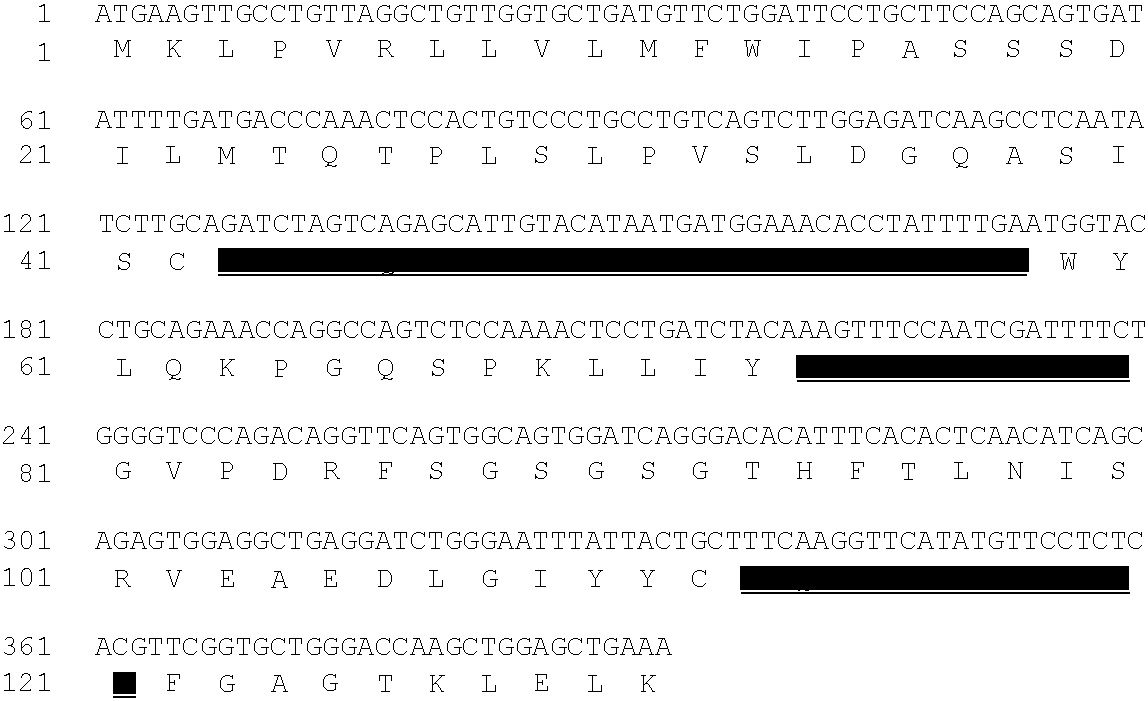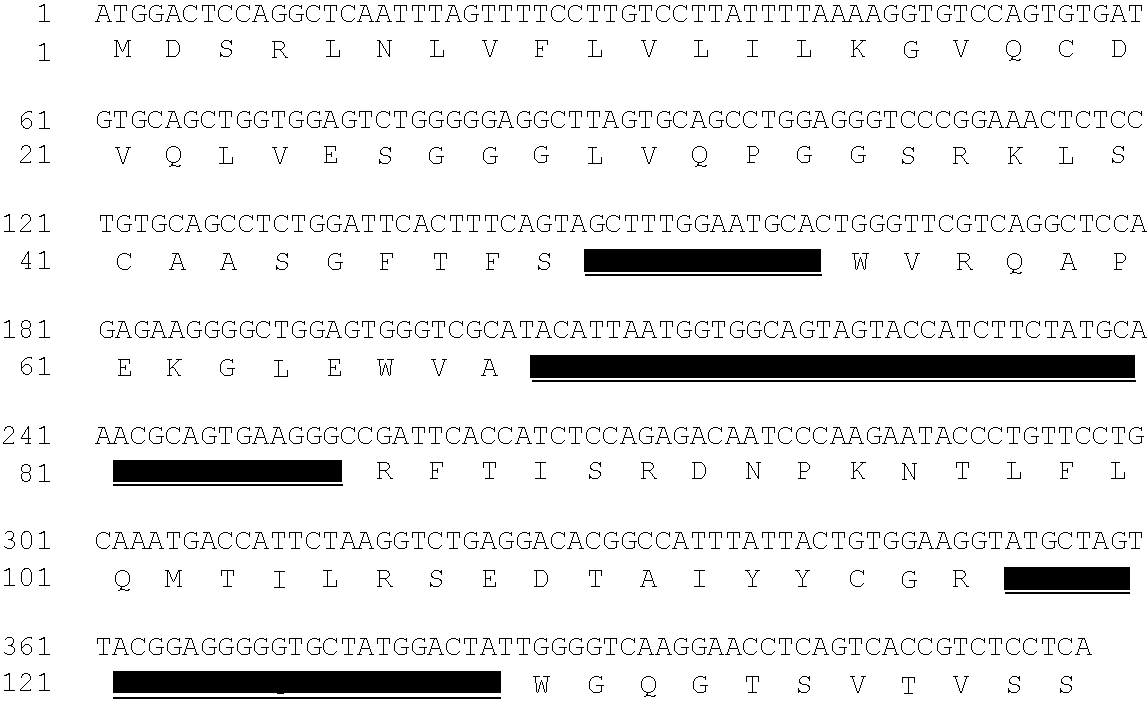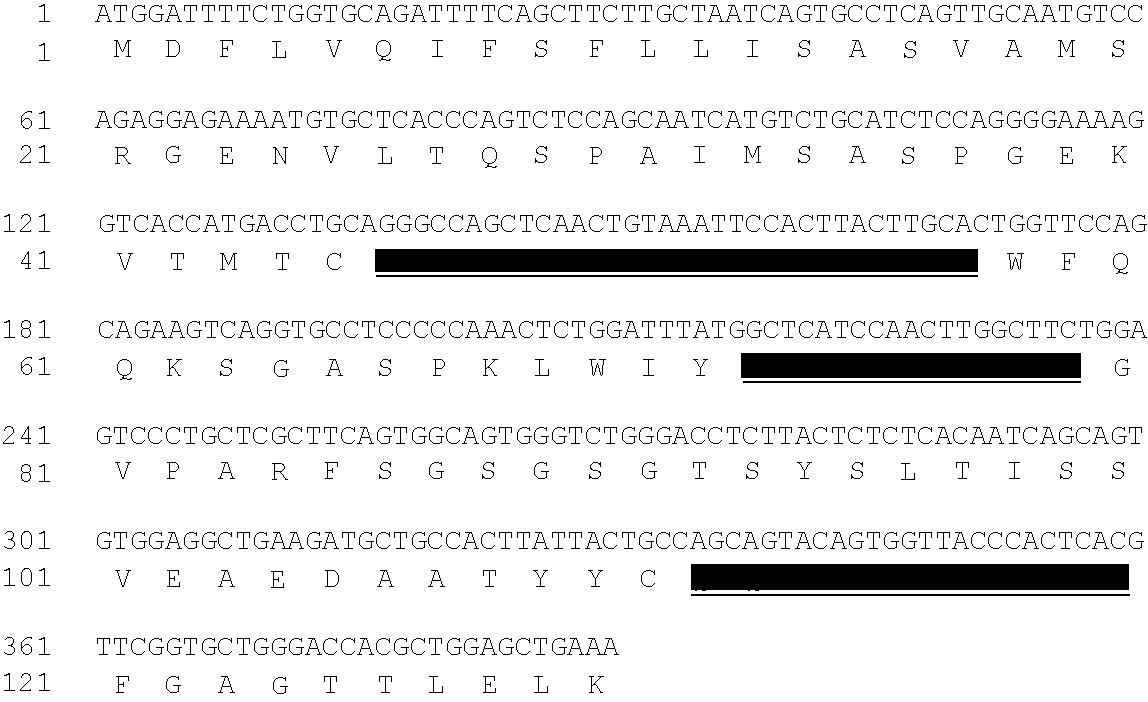Anti-psgl-1 antibodies
a technology of anti-psgl-1 antibodies and antibodies, applied in the field of anti-psgl-1 antibodies, can solve problems such as unwanted immune responses
- Summary
- Abstract
- Description
- Claims
- Application Information
AI Technical Summary
Benefits of technology
Problems solved by technology
Method used
Image
Examples
example 1
Mouse Monoclonal Antibodies 15A7, 43B6, and 9F9
Generation of Anti-PSGL-1 Antibodies
[0034]Standard techniques were used to generate mouse monoclonal antibodies that specifically bound to human PSGL-1 (hCD162). More specifically, mice were immunized with membrane fraction of PHA-activated human T cells and sacrificed to generate hybridoma cell lines. Supernatants from resultant hybridoma cell lines were screened for binding to CHO cells that stably expressed hCD162. Those lines producing antibodies that bound to hCD162-expressing CHO cells, but not the parental CHO cells, were identified, subcloned, and further analyzed as described below.
[0035]Among the lines identified were m152-15A7, m166-43B6, and m128-9F9. They produced IgG1 antibodies 15A7, 43B6, and 9F9, respectively. Immunoblotting assay showed that these three antibodies pulled down from lysate of activated T-cells a protein that could be detected by anti-hCD162 antibody (kp1-1, PharMingen, San Diego, Calif.).
[0036]The just-d...
example 2
Chimeric Antibodies 15A7, 43B6, and 9F9
Cloning of Light and Heavy Chain Variable Regions of Anti-CD162 Antibodies
[0050]cDNAs encoding the light and heavy chain variable regions (VL and VH) of antibodies 15A7, 43B6, and 9F9 were amplified by an anchored PCR method. The 3′ primers hybridized to the C regions and the 5′ primers hybridized to G tails attached to the cDNA using terminal deoxytransferase. The PCR fragments were cloned into a pCRII vector (Invitrogen). Several independent clones for each chain were sequenced and compared. A sequence represented by the majority of the independent clones was picked. The translated amino acid sequence was then analyzed to confirm that the chosen sequence possessed the characteristics of typical mouse light or heavy chain V region, and belonged to a specific subtype. The complementarity determining regions (CDRs) were then identified by comparing the translated amino acid sequences with consensus sequence of each subtype. The name and sequence...
example 3
Hamster Monoclonal Antibody TAB4 Against Mouse PSGL-1
[0071]A monoclonal antibody against mouse PSGL-1, TAB4, was prepared in the manner similar to the method described in Example 1. It induced T cell apoptosis in vitro and depleted T cells in vivo. To determine if it interfered with binding between mouse PSGL-1 and mouse P-selectin, competition analysis was performed in the manner similar to the method described in Example 2. It was found that TAB4 did not inhibit mouse P-selectin binding to mouse PSGL-1 even at a concentration as high as 20 μg / ml.
PUM
| Property | Measurement | Unit |
|---|---|---|
| Volume | aaaaa | aaaaa |
| Length | aaaaa | aaaaa |
| Length | aaaaa | aaaaa |
Abstract
Description
Claims
Application Information
 Login to View More
Login to View More - R&D
- Intellectual Property
- Life Sciences
- Materials
- Tech Scout
- Unparalleled Data Quality
- Higher Quality Content
- 60% Fewer Hallucinations
Browse by: Latest US Patents, China's latest patents, Technical Efficacy Thesaurus, Application Domain, Technology Topic, Popular Technical Reports.
© 2025 PatSnap. All rights reserved.Legal|Privacy policy|Modern Slavery Act Transparency Statement|Sitemap|About US| Contact US: help@patsnap.com



